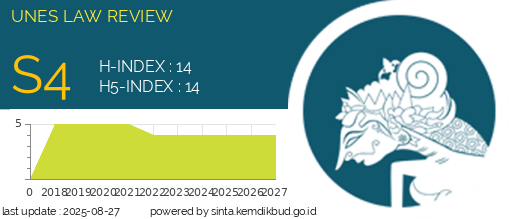Penyertaan Modal Perseroan Terbatas Sebagai Alternatif Strategi Penggalangan Dana Organisasi Kemanusiaan Dengan Legalitas Yayasan
DOI:
https://doi.org/10.31933/unesrev.v6i4.2082Keywords:
Fundraising, Human Service Organization, Foundation Strategy, Organizational SustainabilityAbstract
In carrying out its activities, human service organizations need funding for the implementation of planned programs and develop and enlarge the scale of the organization. Currently, there are many fundraising strategies that can be carried out by human service organizations, one of the strategies that can be carried out by humanitarian organizations is to form a prospective business, while the business is carried out through capital participation in a limited liability company. Legally, capital participation in this limited liability company is legalized for human service organizations with the legality of the foundation, even it is regulated directly in the provisions of the law on foundations. The profits obtained can be a source of permanent funding for the organization, so that human service organizations can be independent and survive and meet all organizational needs. However, fundraising strategies by forming businesses like this are not very popular, generally human service organizations still use conventional fundraising patterns, which fully rely on the generosity of donors to meet the needs of the organization.
Downloads
References
Budi Untung. (2002). Reformasi Yayasan Perspektif Hukum dan Manajemen, Yogyakarta: Andi.
Chatamarrasyid. (2000). Tujuan Sosial Yayasan dan Kegiatan Usaha Bertujuan Laba, Bandung: Citra Aditya Bhakti.
Frans Satrio Wicaksono (2009). Tanggung Jawab Pemegang Saham, Direksi, dan Komisaris Perseroan Terbatas (PT), Jakarta: Visimedia.
Hasenfeld, Y. (2010). Human Services As Complex Organizations. University of California, Loas Angeles. http://marefateadyan.nashriyat.ir/node/150
J.Steven OTT & Lisa A. Dicke. (2013). Understanding Nonprofit Organizations: Governance, Leadership, and Management, Westview Press.
Klein, K. (2016). Fundraising for social change (seven). John Wiley & Sons, Inc.
Norton, M. (2002). Menggalang Dana: Penuntun bagi LSM dan Organisasi Sukarela di Negara-negara Selatan. Yayasan Obor Indonesia.
Neuman, W.L. (2013) Metode Penelitian Sosial: Pendekatan Kualitatif dan Kuantitarif, Edisi 7, Jakarta, PT. Indeks.
Patti, R. J. (2009). Handbook of Human Services Management (Second). Sage Publications.
Prasetya, Rudhi.(2016). Yayasan Dalam Teori Dan Praktek, Cet 4. Jakarta: Sinar Grafika.
Rubin, A., & Babbie, E. R. (2011). Research Methods for Social Workers. In Research Methods for Social Workers (Seventh Ed). Thomson Brooks/Cole. https://doi.org/10.1057/978-1-137-44283-3
Sumariyadi, S. (2024). Beragam Inovasi Sekolah di Bawah Yayasan Pendidikan Telkom Bandung. Media Indonesia.
Fatimah, S. (2024). Siswa SMK Disiapkan Skill Berstandar Internasional untuk Penuhi Kebutuhan Pasar Industri. Tribun Jabar.Id. https://jabar.tribunnews.com/2024/04/06/siswa-smk-disiapkan-skill-berstandar-internasional-untuk-penuhi-kebutuhan-pasar-industri
Undang-Undang No. 16 Tahun 2001 tentang Yayasan sebagaiana diubah dengan Undang-Undang 24 Tahun 2008 tentang Perubahan Atas Undang-Undang No. 16 Tahun 2001 tentang Yayasan
Undang-Undang Nomor 40 Tahun 2007 tentang Perseroan Terbatas
Downloads
Published
How to Cite
Issue
Section
License
Hak cipta :
Penulis yang mempublikasikan manuskripnya di jurnal ini menyetujui ketentuan berikut:
- Hak cipta pada setiap artikel adalah milik penulis.
- Penulis mengakui bahwa UNES Law Review berhak menjadi yang pertama menerbitkan dengan lisensi Creative Commons Attribution 4.0 International (Attribution 4.0 International CC BY 4.0) .
- Penulis dapat mengirimkan artikel secara terpisah, mengatur distribusi non-eksklusif manuskrip yang telah diterbitkan dalam jurnal ini ke versi lain (misalnya, dikirim ke repositori institusi penulis, publikasi ke dalam buku, dll.), dengan mengakui bahwa manuskrip telah diterbitkan pertama kali di Jurnal UNES Law Review.



















